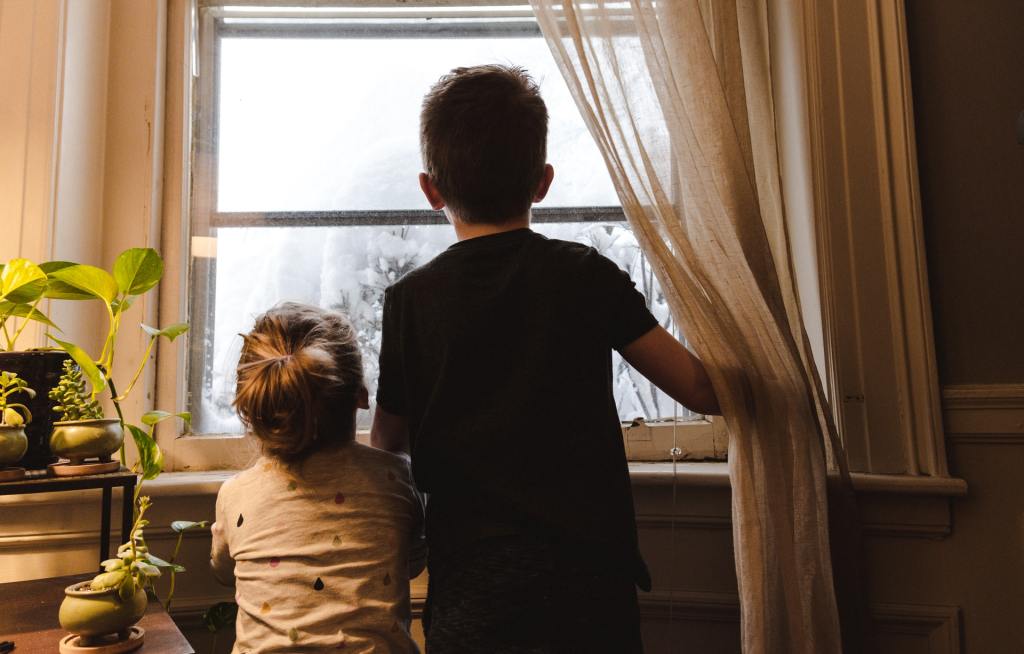Most of us can relate to having a curious kid or pet. Whether it’s a cat that can’t stop knocking cups off countertops to see what happens or a kid who eats potting soil, it’s a disaster waiting to happen. Most of the time, antics like these are simply annoying, but this type of behavior can quickly become panic-inducing if those same curious creatures eat something potentially harmful. So let’s find out if pothos could be harmful for our furry and non-furry babies.

Are pothos plants toxic?
The short answer is yes, but let’s talk about why and to whom. Pothos plants are toxic to adults, children, and even pets. While they aren’t typically deadly, pothos plants have an insoluble calcium oxalate crystal within their leaves and stems. These crystals are like shards of glass that will literally rip, tear, and shred the skin. This includes places like the hands, paws, face, mouth, throat, and even digestive system. There have been a few cases, though very rare, where the irritation even causes swelling in the upper part of the airway. This can make it hard to breathe and might be cause for a hospital visit.
These reactions don’t happen from simply touching the leaves or performing regular care routines such as watering or dusting the leaves. Responses like this typically occur if a child or pet eats a plant or if you’re pruning or repotting the plant and some plant material is rubbed into your skin.
To avoid any panic or unnecessary pain, stay on the safe side and wear gloves when cutting into or working with a pothos plant. You’ll also want to protect your two-legged and four-legged family members by keeping the plant out of reach.
How to grow them safely
You’ve already taken the first step in ensuring your family is safe from toxic plants. Simply educating yourself on the poisonous plants within your home and what makes them harmful will allow you to understand what precautions you need to take. For example, you’re much more likely to take action if you see a kid pulling at a pothos plant if you already know it’s toxic. If you didn’t know, you might shrug and let them explore the world without knowing they could be causing themselves harm.
The most obvious way to keep these toxic plants out of the way is to grow them in locations where children or pets can not reach them. This could be on a high bookshelf or on top of a dresser. You could also place all your toxic plants in a room where the kids and pets cannot go. For example, if the office is a no kid or pet zone and the door stays shut when no one is in there, it’s likely an excellent place to grow your gorgeous golden pothos plant. That way, you don’t have to worry about your family’s safety, but you can still enjoy your plant babies.
Lastly, if the cats just won’t leave the pothos plant alone, even on the top of the refrigerator, it might be time to consider a new option.

Alternatives to keep everyone safe
Although it’s a last resort, finding an alternative plant that isn’t toxic might be the best way to keep your family safe. If you can’t control the kids from messing with it, and if the cat can climb anywhere you put it, maybe consider other plants that look similar but won’t cause irritation to curious hands or paws.
Some of our favorite pothos alternatives are pinstripe calathea, prayer plant, wandering jew, and peperomias. While calatheas and prayer plants can be a bit harder to maintain and keep happy than a hardy pothos plant, we’ll bet you sleep better at night knowing nothing will happen if your dog eats a mouth full of calathea leaves.
So while it might seem like you have to get rid of one of your favorite plants, you’ll at least be able to relax knowing that there isn’t any plant within your home that could cause harm to your favorite beings on the planet. It can be hard to let a plant go or even just put it in a place that doesn’t showcase its beauty as well, but it’s worth it in the end to protect the ones we love.
Editors' Recommendations
- Everything you need to know about choosing the best rocks for landscaping
- 6 air plants that make for the perfect air-purifying indoor plants
- When do pears come in season? What you need to know
- If you live in zone 10a, here’s what you need to know about what you can plant
- Gardening 101: Making sure your seedlings grow into healthy plants



